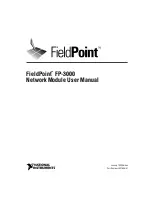
G.shdsl Router User Manual
Your Firewall
A firewall protects networked computers from intentional hostile intrusion that could compromise
confidentiality or result in data corruption or denial of service. It must have at least two network
interfaces, one for the network it is intended to protect, and one for the network it is exposed to. A
firewall sits at the junction point or gateway between the two networks, usually a private network
and a public network such as the Internet.
A firewall examines all traffic routed between the two networks to see if it meets certain criteria. If it
does, it is routed between the networks, otherwise it is stopped. A firewall filters both inbound and
outbound traffic. It can also manage public access to private networked resources such as host
applications. It can be used to log all attempts to enter the private network and trigger alarms when
hostile or unauthorized entry is attempted. Firewalls can filter packets based on their source and
destination addresses and port numbers. This is known as address filtering. Firewalls can also
filter specific types of network traffic. This is also known as protocol filtering because the decision
to forward or reject traffic is dependant upon the protocol used, for example HTTP, ftp or telnet.
Firewalls can also filter traffic by packet attribute or state.
An Internet firewall cannot prevent individual users with modems from dialling into or out of the
network. By doing so they bypass the firewall altogether. Employee misconduct or carelessness
cannot be controlled by firewalls. Policies involving the use and misuse of passwords and user
accounts must be strictly enforced. These are management issues that should be raised during
the planning of any security policy, but that cannot be solved with Internet firewalls alone.
Internet
Internet
Local User
Internet
Allowed Traffic
Out to Internet
Specified Allowed Traffic
Access to Specific
Destination
Restricted Traffic
Unknown Traffic
Firewall
Types of Firewall
There are three types of firewall:
Packet Filtering
In packet filtering, only the protocol and the address information of each packet is examined. Its
contents and context (its relation to other packets and to the intended application) are ignored. The
firewall pays no attention to applications on the host or local network and it "knows" nothing about
the sources of incoming data. Filtering consists of examining incoming or outgoing packets and
allowing or disallowing their transmission or acceptance on the basis of a set of configurable rules.
Network Address Translation (NAT) routers offer the advantages of packet filtering firewalls but
can also hide the IP addresses of computers behind the firewall, and offer a level of circuit-based
filtering.
5











































